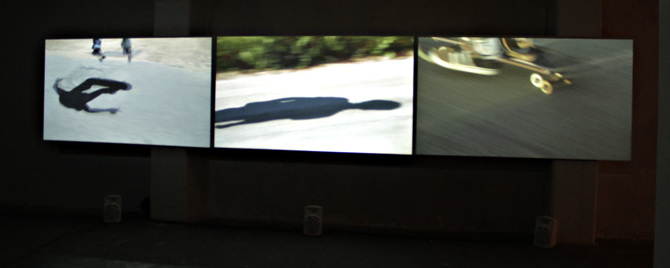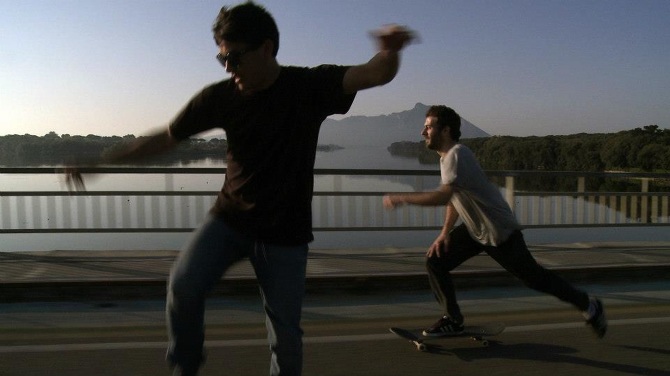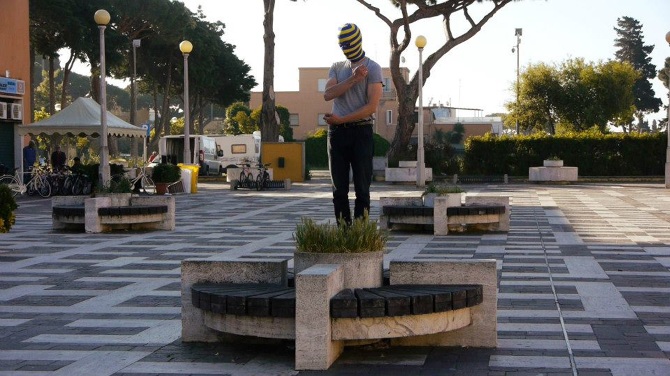Video, 3-channel video installation, 31 min, HD, 2013.
Concept, Director, Edit: Marie Rømer Westh
Camera: Jide Tom Akinleminu
Preview an excerpt of the installation here.
Sabaudia is a town in the region of Latina, 100 km south of Rome, Italy. In 2012 Marie Rømer Westh (DK) invited artists and skaters to join her in the town Sabaudia for a film project: an aesthetic reflection within the remains of a totalitarian utopia, an intervention with a perfectly structured town in order to try out its creative potential and comment on individual expression in public space. All inspired by the “do it yourself” culture that is significant for its ability to combine individualism and creativity, supporting a dynamic environment based on personal action, exchange and reflection, the artists and skateboarders are reflecting through performances and gestures, the form, structure, use, history and present of the place. A collaborative intervention in the Italian town Sabaudia. The installation shows an aesthetic intervention with the remains of a fascist utopia and compiles a variety of points of view on the idea of fascism, utopia and idealism in general. Sabaudia is situated in what originally was a wild marchland famous and notorious for malaria and a home only for shepherds and lawless individuals. The Fascist regime started here a huge agricultural revolution that was to make Italy self sufficient and able to conquer the world. This new region was to be known for its small villages, Latina, Pontinia, Aprilia, Pomezia and, in 1934, Sabaudia. All built in the modern Italian functionalist/fascist style, each village with everything from church to town hall and party offices, schools, shops and homes. Including street signs, lamps and manhole covers with inscriptions designating the year 1922 as year 0 marking the beginning of the new Fascist area. The world was to start anew. Sabaudia was made as a model for towns to be built in the Italian colonies and is one of the most intact examples of modernist architecture build by the Fascist regime.
Produced with support from Statens Kunstråd/Danish Arts Council and Det Danske Institut Rom/Accademia Di Danimarca.


